Use the links above to jump to the setting topic you’re interested in right now.
What is setting?: Key terms and concepts
Read definitions of setting plus explanations of writing craft terms related to worldbuilding.
Definitions of setting
Setting in literature (books, plays, screenplays and other media) means time and place. Where your story takes place, and when. Context and milleu or social environment, too (what place and time contribute to the possibilities and limits in characters’ lives).
Oxford Learner Dictionaries online defines setting thus:
‘An environment where something is located; the place at which something happens’.
Scene setting
Exposition in a story that establishes the setting of a story and place-related context – for example, time of day, tone, mood, mise en scene.
Mise en scene
A term adopted from French literally meaning ‘putting on stage’, the arrangement of scenery such as props on a set.
Description in narrative fiction often functions similarly as objects may convey place, era, and set reader expectations for events to come (see this article on the concept of ‘Chekhov’s Gun’ for more on the ways objects contribute to story context).
Worldbuilding
The process of creating believable worlds in stories, whether creating new worlds or representing a fictionalized or recreated historical facet of our own one.
N.K. Jemisin (three-time winner of the prestigious Hugo Award) divides worldbuilding into ‘macro-worldbuilding’ and ‘micro-worldbuilding’, to approach creating two scales of world invention.
The macro- type refers to creating large regions such as planets, continents and countries and the systems therein.
The micro- type of worldbuilding is the smaller scale such as populating these large spaces with diverse species, plants and smaller story locations.
Milleu
Another word from French (via the social sciences), milleu means social environment. For example, you might say a wealthy land-owner who mixes with high society comes from an ‘aristocratic milleu’.
Milleu is a social element of setting that affects plot and the realm of possibility for your characters. For example, a woman in a novel set during a time of extreme patriarchy may have significantly curtailed rights, such as in Margaret Atwood’s futuristic dystopia in The Handmaid’s Tale (1985).
It is a particularly useful setting concept for writing historical fiction (since political power and societal mores around issues such as gender change over time).
Recommended reading
You need to know all the minutia, and as the artist, that means that you have to understand the day to day.
N.K. Jemisin
Organize and outline settings and scenes
Use Now Novel’s story dashboard to brainstorm setting details and organize place in your story.
START NOW
Genre and setting: Finding fresh scenes in shared symbols
Now that we’ve thought about what setting is, what about genre?
Genre carries an important connection to setting.
Each genre has story settings commonly associated with it. If you include a spaceship as a story location in your book, there’s a good chance it will be classified as science fiction, for example (even though it might incorporate or allude to other genres more often).
Read types of settings common to popular genres (and tips to find fresh scenes and setting ideas within these often-explored places).
Overview of settings often used in popular genres
Fantasy & science fiction settings
Parallel worlds and other dimensions often feature. For example, the mythical land of Narnia in C.S. Lewis’ beloved series. Or an enchanted wood in Enid Blyton’s The Magic Faraway Tree (1951), a familiar children’s story for generations.
Fantasy settings (so-called ‘academic fantasy’) often feature magic schools (a novice, after all, must become adept). Sometimes these schools are magical castles, sometimes regular-looking schools that happen to teach magic.
Classic sci-fi and space opera from Star Trek to Star Wars often takes a spaceship as its core setting. Sometimes, mysterious UFOs or other spaceships or planets become the destination for adventure (such as the planet Arrakis in Frank Herbert’s Dune (1965) or the alien starship investigated in Arthur C. Clarke’s Rendezvous with Rama (1973)).
Place and time in fantasy are influenced by magic’s presence. For example, in urban fantasy, what are the conditions for magic to occur? Do witches, wizards or other magical character types only meet at night or is magic happening right under muggles’ noses?
In science-fiction, what exploration, unknowns, questions, will scientific progress prompt?
Learn more about setting in fantasy and sci-fi:

How to create a fantasy world that everyone will believe
Learn tips for creating believable fantasy settings with depth.
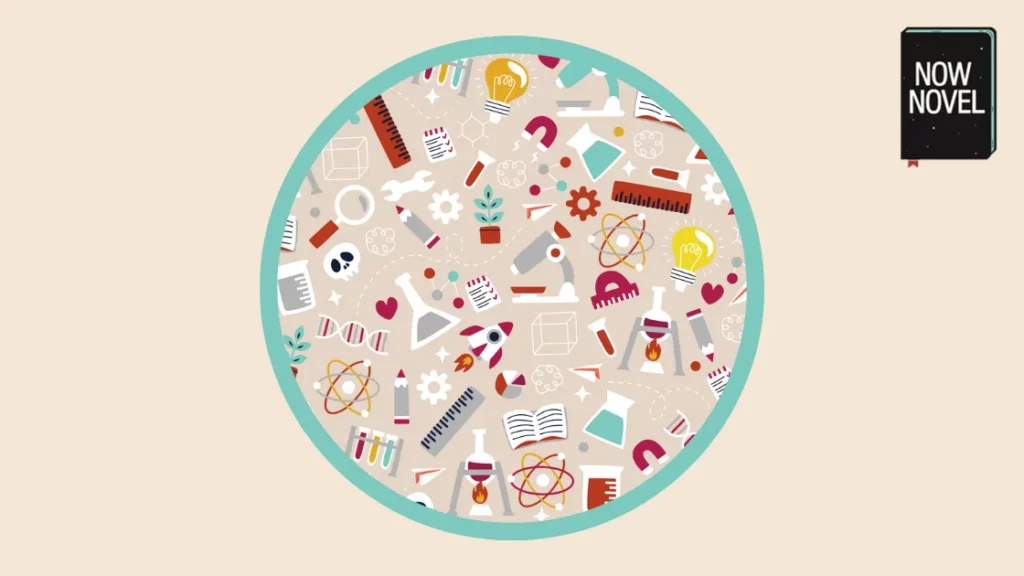
Science fiction writing tips: Ideas from 8 authors
Learn about building systems and societies in science fiction.
Adventure and travelogue settings
In genres such as adventure and survival stories, the natural environment is an important element. Think of the many island strandings from literary history (Robinson Crusoe (1719), The Lord of the Flies (1954)).
Setting in these stories is often adversarial, full of dangers such as:
- Unforgiving or impassable terrain
- Dangerous wildlife
When characters venture to new, unfamiliar places, they may also encounter peoples and cultures they haven’t before (at least, not in their own context). Chinua Achebe wrote a scathing essay about how Joseph Conrad represented African locals and traditions in Heart of Darkness (1899), an example of a colonial adventure narrative reflective of the racism of its time.
How can you represent natural settings or the unfamiliar ‘other’ in adventure with imagination, in fresh ways that don’t rely on awkward or even offensive tropes?
This is where doing thorough research (more on this below) and listening (and even getting sensitivity readers) is wise to make sure setting is neither reductive nor cringeworthy.
Learn more about avoiding simplistic stock character types:
Character tropes: 5 tips to avoid stock types.
Mystery and crime settings
Many classic mystery novels unfold in sealed/enclosed environments.
This helps the scope of the story, as the number of potential suspects is limited to the population of the setting (for example, guests at a remote hotel or passengers onboard the ‘Orient Express’).
Settings in mystery and crime are often (though not necessarily) urban – after all, big cities are where it’s easiest for wrong ‘uns to escape detection. Due to the sheer size of metropolitan populations (and the extreme inequality of many large cities’ economics), crime is almost inevitable.
In a small farming community, by contrast, everyone (usually) knows your name and your business.
This in itself can make an intimate or cozy setting interesting for creating an interconnected cast of suspects and the crime-affected.
Learn more about setting in writing mystery stories:
Writing a cozy mystery: 10 feel-good suspense tips
Romance or romantic settings
When you think ‘romance’ you may think of a clichéd story setting such as a tropical beach paradise or a villa somewhere in Tuscany.
Even clichéd settings can be made fresh through creative characterization, description and good research, of course. But romance can happen anywhere.
Some of the longest-surviving stories about lovers take place in unlikely locations (e.g. the underworld or realm of the dead, in the Greek myth of Orpheus and Eurydice).
Learn more about time/era in romance:
Writing romance: Advice from 8 authors and agents
Questions for creating settings in your genre
For the above story genres and all others, to create novel settings, ask:
- What settings aren’t done to death in my genre? Where (and when) hasn’t been featured much recently and could be overdue for some fictional representation?
- What’s the same but different? What’s unique about this spaceship, planet, enchanted forest?
- How will time and place affect core elements of my genre? A meet-cute in a romance set in Ancient Roman times will naturally differ in several setting elements from contemporary London.
Recommended reading
Devour old films, new films, music, books, paintings, photographs, poems, dreams, random conversations, architecture, bridges, street signs, trees, clouds, bodies of water, light and shadows. Select only things to steal from that speak directly to your soul. If you do this, your work (and theft) will be authentic.
Jim Jarmusch
Setting planning and research
Why is research important when creating story settings?
It depends whether you are writing ‘realist’ fiction or speculative (such as fantasy and science fiction).
In historical fiction, for example, if writing about real people who lived in a bygone era, you would of course need to do research.
Yet even made-up worlds have rules and systems. As Ursula K. Le Guin writes in No Time to Spare:
The fantastic tale may suspend the laws of physics – carpets fly; cats fade into invisibility, leaving only a smile – and of probability – the youngest of three brothers always wins the bride; the infant in the box cast upon the waters survives unharmed – but it carries its revolt against reality no further. Mathematical order is unquestioneed. Two and one make three…
Ursula K. Le Guin, ‘It Doesn’t Have to Be the Way It Is’, in No Time to Spare (2019), p. 80.
Planning and researching a setting gives you the foundation on which to build a temple or paint a face (and in so doing create a time that your reader can only experience through representation or archival material).
How to research story settings
How do you find relevant information and research details for your setting?
- Start with research-oriented pre-writing. Mind-mapping and freewriting around a place or time will help you think of topics you need to research (such as ‘clothing in Tudor England’).
- Use trusted, fact-checked sources. Random Blogspot blogs may be goldmines (for example, you may find a studied historian who keeps a blog on their pet subject), but are often less trustworthy for verified fact. Favor published books, journals and magazines that have an editorial team and well-known .edu and .org resources (educational and organizational websites).
- Set scope for setting research upfront. It’s easy to go down rabbit holes reading about Fifteenth Century torture methods or romantic intrigues in the courts of kings. Write a sentence summary of what you want to research at the start of each investigation. Stick to the topic and use indexes to look up relevant info faster where available.
- Speak to subject librarians. If you are able to access subject librarians who are experts in an aspect of your setting, e.g. 18th century architecture in England, they may be willing to share a list of useful resources.
- Watch and read art representing similar settings. Many authors list non-fiction and fiction books in their acknowledgements. One author using a similar setting may give you a sense of the mores of an era, another an idea of the layout of an ancient city. You can repurpose anything usable into your own style and voice, and change significant details to make it your own.
Many big museums (e.g. the Smithsonian in the US, or the British Library in the UK) have digital collections of fascinating art and manuscripts.
Use an info organizing tool such as Evernote (or a simple Word or Google Docs file) to clip and save relevant information and extracts, and remember to record the source or URL too so you can quickly find setting research when you need it again.
Planning the setting of your story
What about planning the setting of a story?
There are many brainstorming and outlining tools that help you record real or made-up place names, answer questionnaires about them, and thus create a detailed outline of potential story locations.
A quick setting planning questionnaire:
- Why am I including this setting (how is it important to my plot and/or characters)?
- How might this setting change over my story’s course (and why)?
- What is the most surprising thing about this place?
- What is the history of my story setting?
- What do people (wear/eat/believe/worship/abhor/flaunt/hide) here?
- What’s one thing my main character loves about this place?
- Then what’s one thing they dislike about it?
Make your own questions, or answer guided prompts in the Now Novel dashboard to brainstorm settings, plot points and more (tour the dashboard’s features here).
Recommended reading
You’ve done your research, gathering the facts; historical, social, climatic, culinary, that will give your story its feel of authenticity.
Yann Martel
Setting development: Making place change with time
Many great stories treat pace not as a monolith but as a character – subject to changes both implicit and explicit.
What are key ways settings change in fiction?
- Destruction/renewal. How will major upheavals in place and time affect your characters? Will they make (or break) their fortunes?
- Power shifts. A classic example is when Frodo and co return to The Shire after their trek to Mordor in The Lord of the Rings, only to find more destruction that has changed home for the worse.
- Changing societal values/norms. It’s feasible that your story might span a passage of time in which a milleu changes its views or attitudes. For example, attitudes towards LGBTQIA+ people by conservatives. What do changes in the reigning politics or social systems of the times mean for your characters? Do they win, lose, or hold ground?
- Changing personal attitude to place. Your characters may feel differently about places depending on the events of your story. A favorite location might be sullied by a sour memory (or the scene of a trauma may seem dwarfed and made impotent by a positive internal change). Perception and place hold the power to transform each other.
The ideas above show that story settings may have arcs just like characters do. In Brideshead Revisited (1945), the main character returns to a once magnificent manor as a soldier only to find it shelled after the war. There is a profound sense of loss in this and what in Portuguese is called saudade – longing for something not real or unattainable.
Learn more about developing story settings:
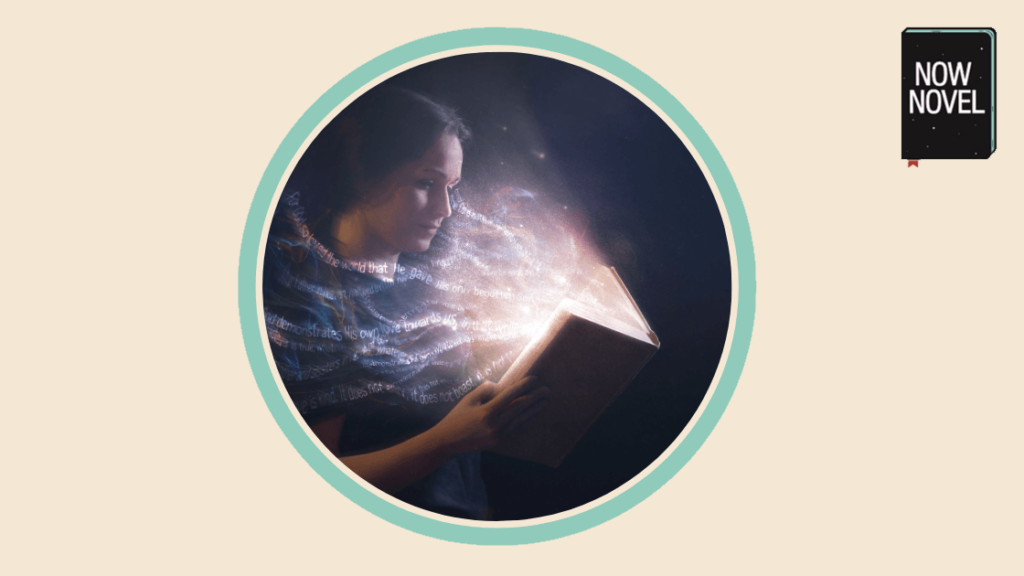
Plot and setting: Driving stories using time and place
Learn how to use setting to drive your plot, and vice versa.
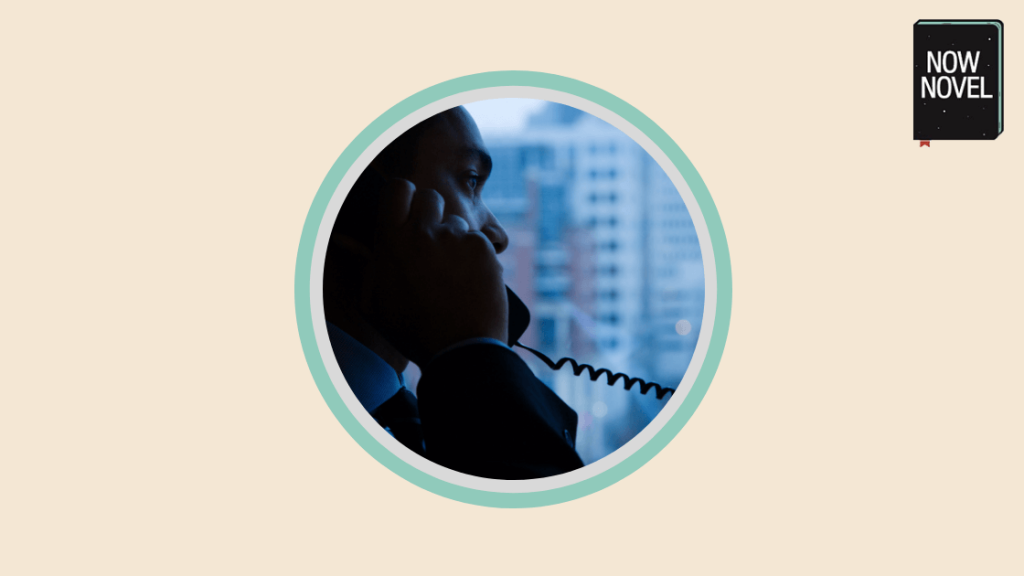
Writing conversations using setting (examples)
Discover ways to intertwine dialogue and setting in scenes.

Join 13,000 writers
Be first to know whenever we publish and get bonus videos
and the latest Now Novel news.
Setting and conflict: Plot vs setting and driving story events
What about the relationship between story setting and conflict in fiction?
The setting of an action makes all the difference in its outcomes.
A person slipping something into their pocket at home might not raise an eyebrow, whereas doing the same gesture in a supermarket may arouse shoplifting suspicions.
Some places prompt conflicts more than others. Place itself may become adversarial. The wannabe actor comes to loathe their stifling home town. The band of heroic misfits is pursued by the Nazgul – a safe harbor ahead the only way to make their pursuers lose the chase.
Six types of conflict and the role of setting
Remember the six types of story conflict? They are person versus:
- Self: Your character’s internal strife
- Person: Your character’s conflict with others
- Nature: When your character must survive harsh elements
- Society: When it’s your character against the whole town
- The supernatural: Your character is pursued by a destructive non-natural force or entity (ghosts, boogeymen – whatever that m ay be)
- Technology: Your character faces off a cyborg, robot, or other ghost in the machine.
For each of the above types of conflict, story setting may play a determining role at some point of the story. For example:
- A character with mental health struggles has an episode of worse health triggered due to a stressful new environment (person vs self).
- Two people bicker in line at the height of summer because they are hot and tired (person vs person).
- A sudden turn in weather makes a mountain ascent far more dangerous (person vs nature).
- A right-wing tyrant seizes power in a long-brewing coup and begins targeting minorities (person vs society).
- Foolish kids playing with an esoteric book of rituals cause a house to be possessed by a demonic entity (person vs the supernatural).
- A scientist researching prosthetics controlled by brain implants discovers a dangerous side effect that puts the whole city in danger (person vs technology).
Think about what elements of your setting mean for conflict. Are there tensions that bubble up with seasonal change, or shifts in power dynamics under volatile political circumstances?
Learn more about setting driving story conflicts:
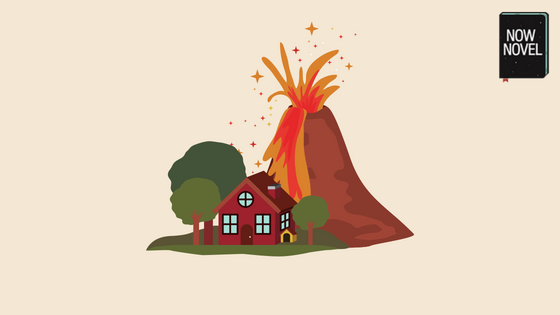
6 intriguing conflict types in fiction: Man vs nature
Read about 6 core types of conflict in fiction.
In a few decades, the relationship between the environment, resources and conflict may seem almost as obvious as the connection we see today between human rights, democracy and peace.
Wangari Maathai
How to describe a setting: Examples and tips
Setting description adds character to stories. Read tips to evoke place as well as descriptive setting examples that will help you create a three-dimensional world.
Ways to describe settings
There are several ways to describe settings from the macro (countries, kingdoms, planets) to the micro (rooms, streets, wardrobes children hide in while playing). You might:
- Set the scene with expository narration. The start of a scene is a great time to give concise description that establishes context and precise mise en scene details
- Reveal setting through action. What might your character dodge, vault or stumble over in a high-speed chase?
- Involve scenery in dialogue: Say you open in medias res (in the middle of things) with dialogue. You could weave in action tags that involve your setting to slip in added place context
- Illustration: Depending on your medium and the limitations of your format, you might illustrate a key location here or there or use your cover design to convey the tone and mood of an important place in your story
Watch a short video on ways to describe place:
How to describe: Writing clear places and characters
Understanding how to describe places and characters well, using precise adjectives, stronger verbs in place of adverbs, and other devices, will help you create a filmic, immersive story.Read setting description examples and tips to evoke detailed and memorable place:

How to describe to immerse readers (complete guide)
Explore tips to describe places and characters and cross-genre examples.

How do you describe a place? 6 setting tips
Read place description tips, such as ways to evoke place using the senses.
Recommended reading
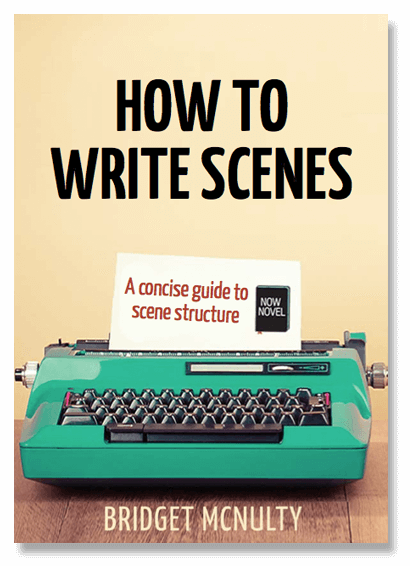
GET YOUR FREE GUIDE TO SCENE STRUCTURE
Read a guide to writing scenes with purpose that move your story forward.
Learn moreWorldbuilding tips: Authors’ advice on writing place and time
Read several authors’ thoughts on this key element of story craft:
Ursula K. Le Guin on keeping clear cause and effect
Le Guin suggests you can take your reader anywhere and they will follow provided that laws of causality (or action and reaction) maintain a sense of connection:
The child ‘telling a story’ roams about among the imaginary and half-understood without knowing the difference, content with the sound of language and the pure play of fantasy with no particular end, and that’s the charm of it. But fantasies, whether folktales or sophisticated literature, are stories in the adult, demanding sense. They can ignore certain laws of physics but not of causality.
Ursula K. Le Guin, ‘It Doesn’t Have to Be This Way’, p. 80.
N.K. Jemisin on checking your world’s plausibility but putting aside assumptions, too
N.K. Jemisin writes about when it is appropriate to seek out expert knowledge for worldbuilding for fiction authors:
It can be helpful in terms of– of detail and sort of place setting for you to have a conversation with a subject matter expert before you’ve started writing or in the early stages of writing. It can help you sort of rule out lines of exploration or paths that your story might have gone down that really aren’t realistic or won’t work.
N.K. Jemisin, ‘Worldbuilding: Research’, via MasterClass
Elsewhere, Jemisin cautioned against launching into worldbuilding without being conscious of our own biases or assumptions:
People go into creating a world that is not like ours with their embedded assumptions about how our world works still firmly in place.
Jemisin, speaking at the WIRED25 Festival in San Francisco, via Lithub.
Brandon Sanderson on grounding the fictitious in the real
Fantasy author Brandon Sanderson advocates bringing a touch of scientific and other truth to the wildly imaginative:
Magic works best for me when it aligns with scientific principles. Worldbuilding works best when it draws from sources in our world. Characters work best when they’re grounded in solid human emotion and experience.
Brandon Sanderson, via Goodreads
What’s your favorite worldbuilding advice ever? Tell us in the comments.
Read more ideas on worldbuilding, from how to create civilizations to useful questions to ask when creating fantasy worlds:
The mind that thought of light, heavy, grey, yellow, still, swift, also conceived of magic that would make heavy things light and be able to fly, turn grey lead into yellow gold, and the still rock into a swift water.
J. R. R. Tolkien
Start brainstorming story settings now. Use the World builder for structured micro- and macro-worldbuilding when you upgrade, plus get access to a growing library of writing tutorials and resources for story setting.

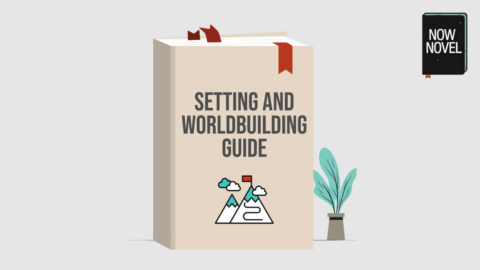
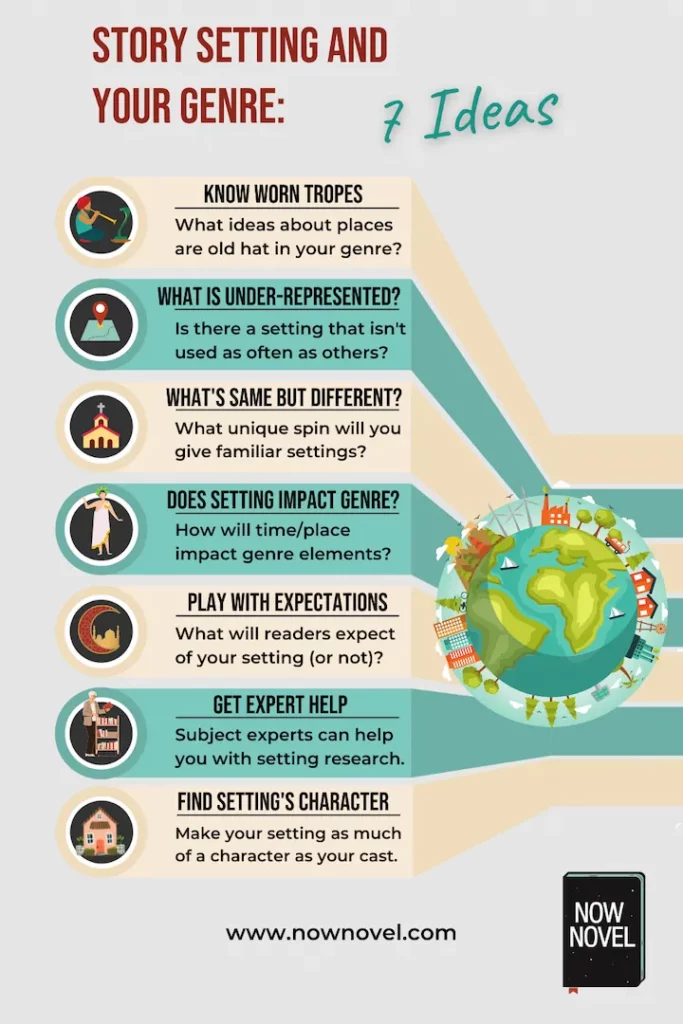
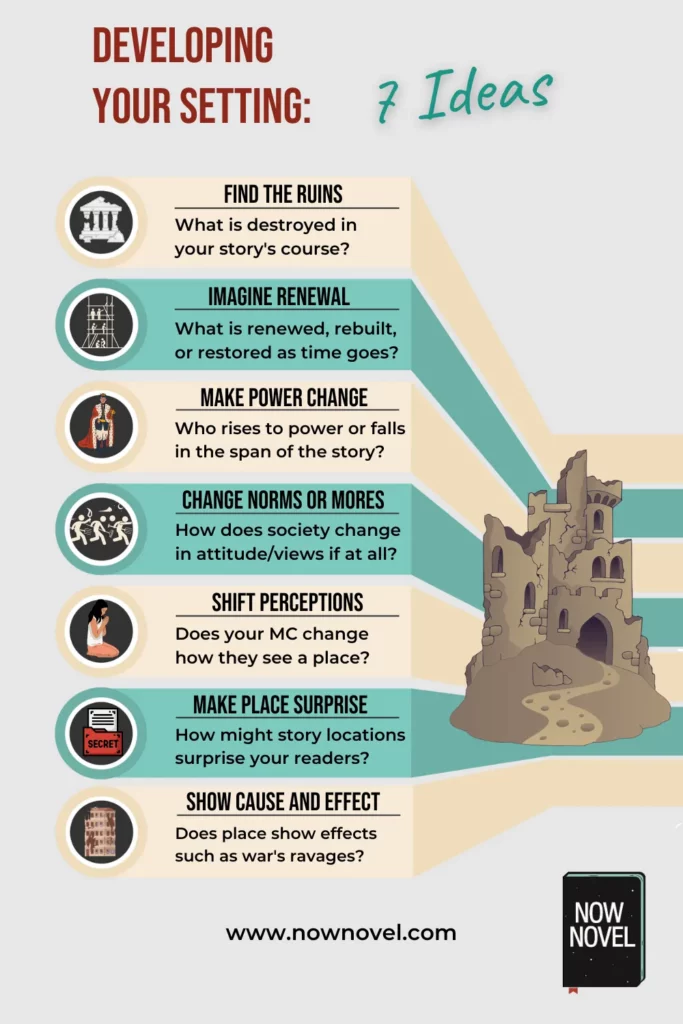
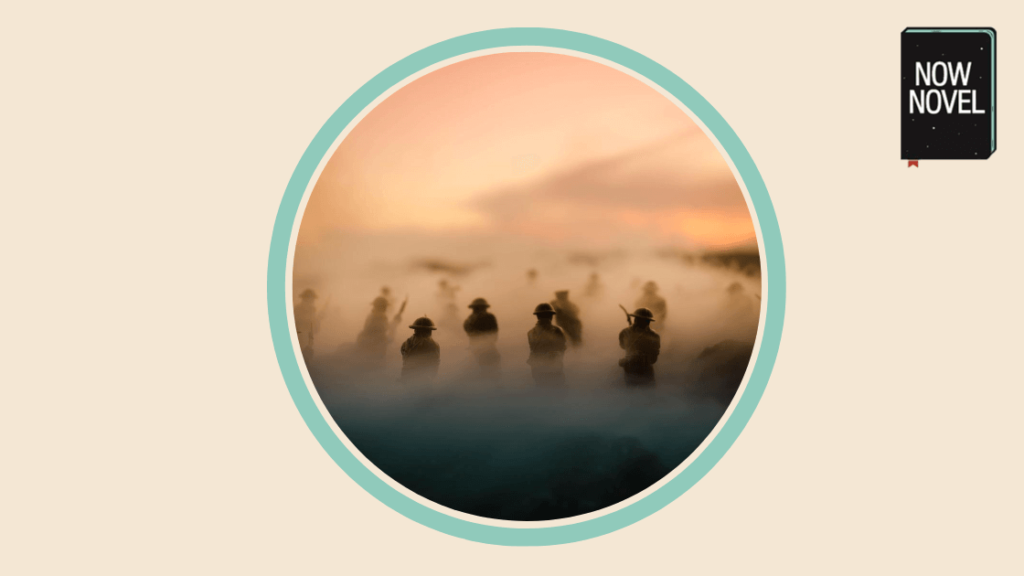
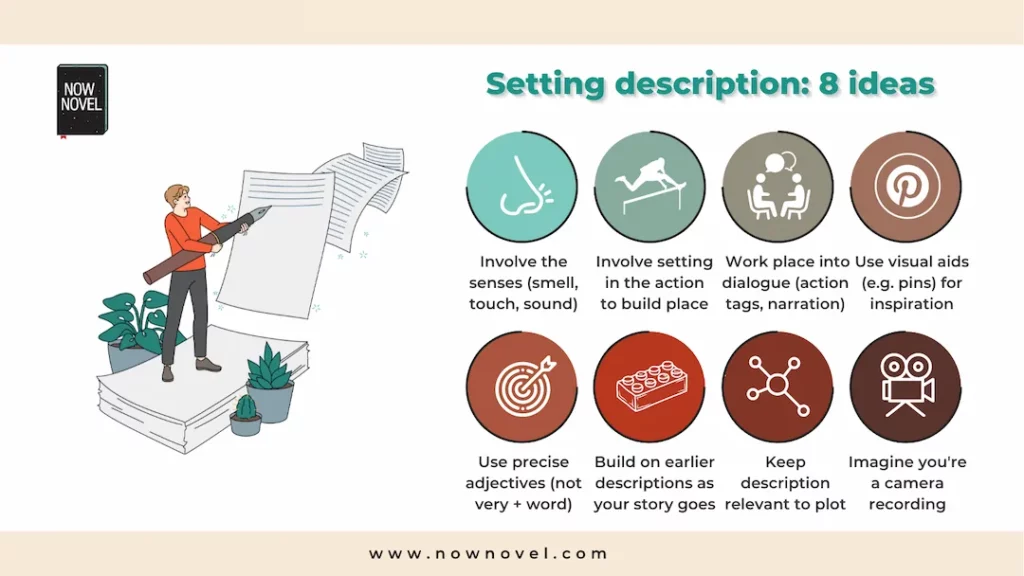

6 replies on “Story setting and worldbuilding: Complete guide”
Thank you for this wonderful article. I am finishing my BSN in the fall of 2021 and plan to continue on to get a master’s in medical writing. So all the writing information I can get will help.
That sounds an interesting combination of degrees, Polly. It’s a pleasure! Best of luck with your studies.
[…] know what you want to do. Outlining will show you if it really works. When you outline your story settings, you’ll catch things you might overlook in the storytelling. When you know your premise, and you […]
Great info here, especially how setting can limit, thus buffer the plot. For me, this helps me with the overall focus. Just as I do with a character, I profile my setting. Usually with an email so I can attach images, etc. What is the economy like, how about their belief system? Are they dependent on themselves like an agrarian community might be, or do they have strong connections outside the “setting”? What’s the social setup. Uptown New York City versus small town, same-similar? The politics and government, all make up the ether of a setting. I rarely incorporate all to this; my settings are pretty basic and bland, but knowing what’s what helps me make better choices in the planning and execution of the plot.
Hi Jake, thank you for sharing your process. You’re right, even if you don’t use everything no process spent getting to know the world in your imagination with clearer vision is wasted. It benefits the story ultimately.
[…] https://www.nownovel.com/blog/what-is-story-setting/ […]